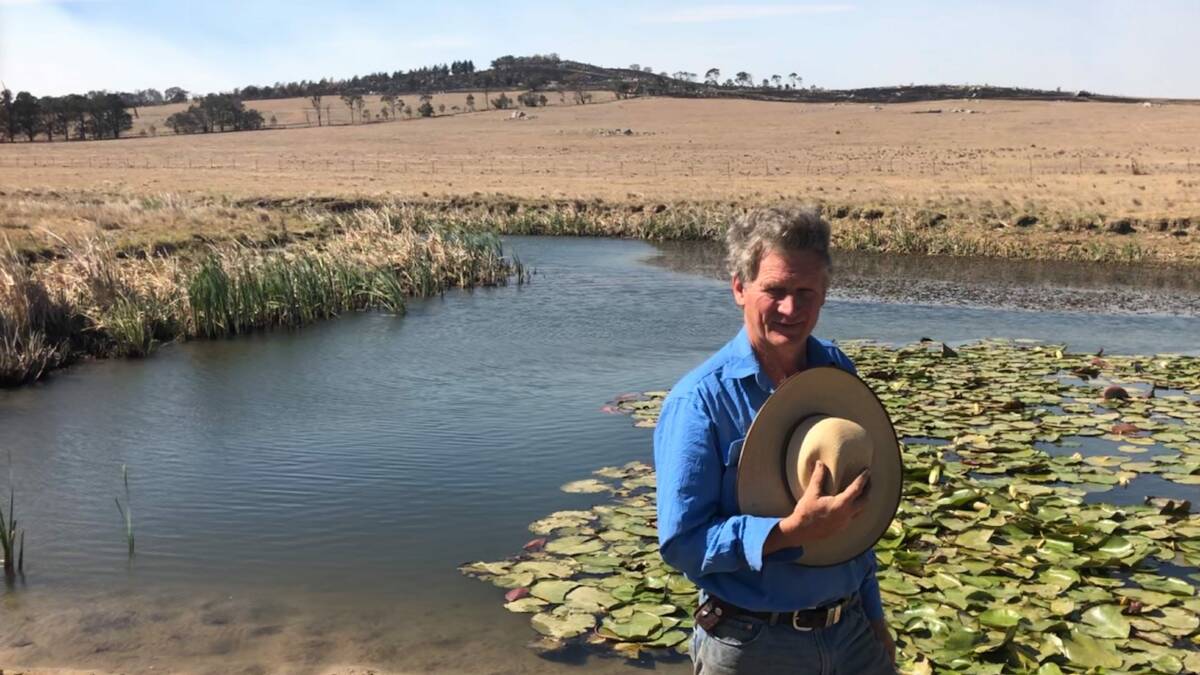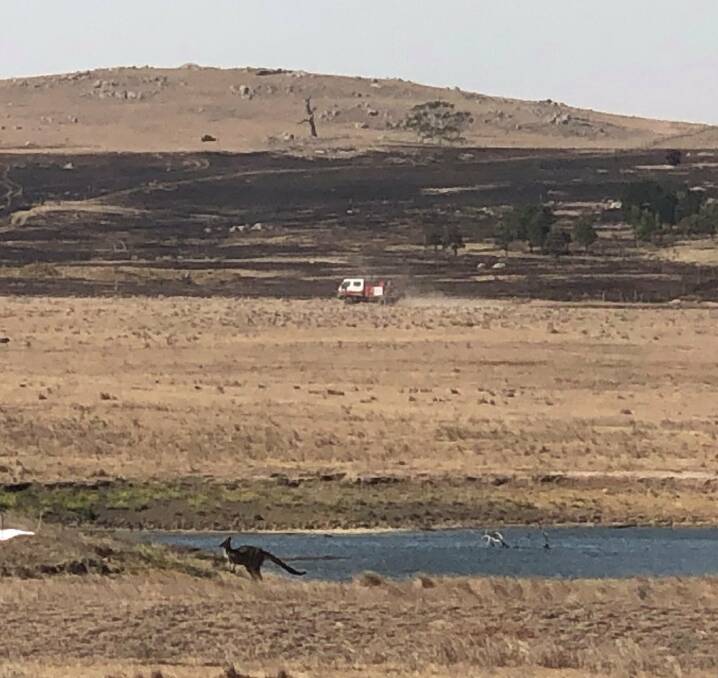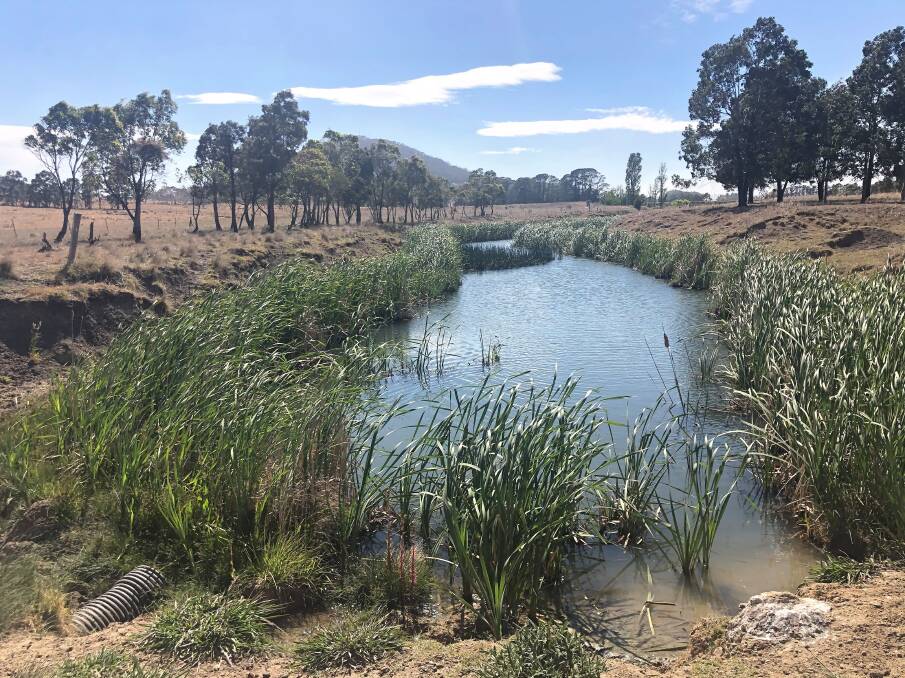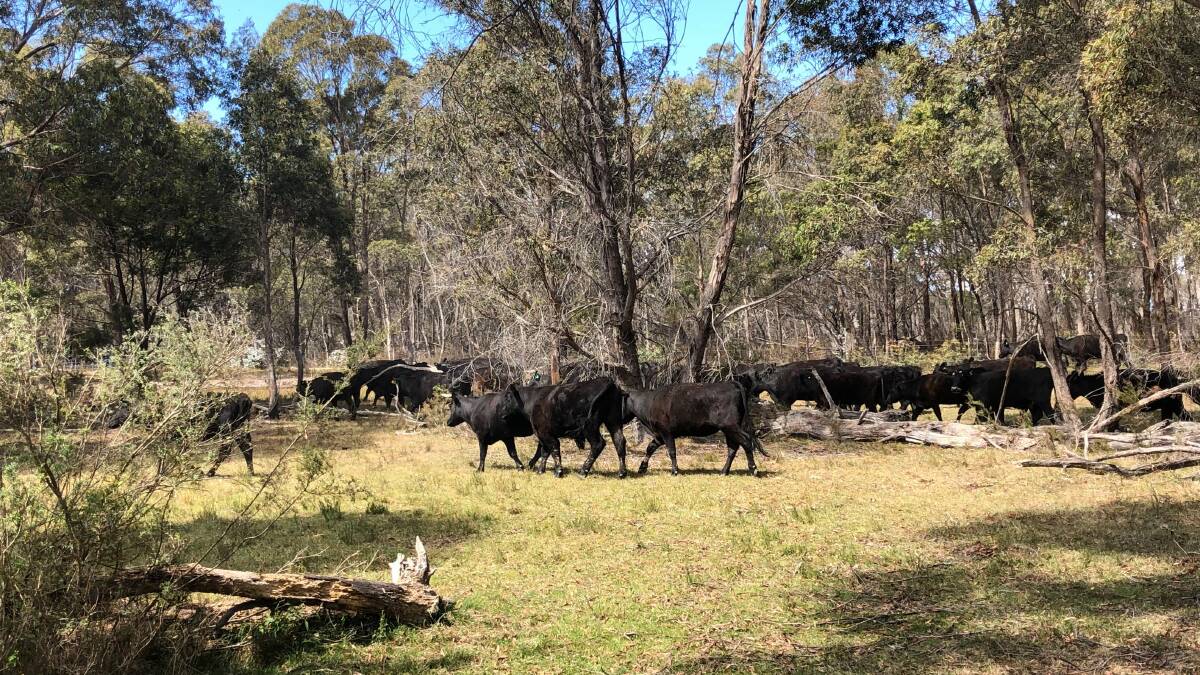
There are few farmers around Braidwood with access to reliable stock water at the moment, with the drought intensifying in the region.
Subscribe now for unlimited access to all our agricultural news
across the nation
or signup to continue reading
However, cattle producer, Martin Royds, Jillamatong, still has more than 20,000 litres of water a day flowing from the weir system he built in 2007.
The weirs have proved invaluable to firefighters during the recent bushfires in the area, which burnt 30 per cent of Mr Royds' property.
"We've had the helicopters sucking out of these weirs all through the fires. At one stage they were taking from them every 40 seconds," Mr Royds said.
The weirs have also been offered as a short-term source of water for the nearby town of Braidwood if needed, with the Shoalhaven River drying up rapidly and its water quality possibly affected by the fires.
"After these fires we're going to have a massive amount of toxins coming out of the burnt forests," Mr Royds said.
The weirs' ability to stay full and fresh may seem like magic in the middle of a drought, but Mr Royds says it all comes down to natural sequence farming and regenerative agriculture.
Mr Royds has been practicing regen ag for decades, having studied water hydrology and plant dynamics under Peter Cullen of the Wentworth Group at Canberra University.

In 2005 he met landscape natural sequence pioneer, Peter Andrews, who showed him how his erosion gully was once a chain of ponds.
"The gully was four metres deep and it drained all the water, if we got a big rain event the water ran off into the gully and out to sea very quickly," Mr Royds said.
"Peter taught me how to work with plants and small earthworks to restore the natural landscape function," Mr Royds said.
Mr Andrews and his son Stewart now use Jillamatong in their Tarwyn Park training courses held at nearby The Mulloon Institute and Tombarra.
Mr Royds said the weirs they helped build slowed the water and allowed it to seep into the surrounding soil, like a sponge.
"I have 34 dams, they're pretty much all dry, two have just a puddle of water in them," Mr Royds said.
"But these weirs are still full because they're slowing the water down. What would have gone out to sea two or three years ago is still flowing out of my system."

Evaporation decreases in chain of pools system
As well as saving the flow of water, Mr Royds said compared to farm dams, far less water evaporates from the weirs.
"There are four things that impact evaporation rates, temperature, humidity, wind and surface area," Mr Royds said.
He said they had measured the temperature of their dams and found the water was 15 degrees at deeper levels and 28 degrees on the surface, in the weirs the temperature was 18 degrees the whole way through.
"If we can have it 10 degrees cooler than a farm dam on the same day, you have exponentially less evaporation," Mr Royds said.
He said growing reeds in the weirs increased the humidity levels, while planting trees around them reduced wind, both helping to decrease evaporation.
But it was surface area, Mr Royds said, that played the biggest role.

He said the weirs were also able to filter the water passing through, keeping it clean.
"The reed beds in the system, catch and filter the water," Mr Royds said.
"We measured the phosphorous coming in at 12 parts per million and when we measured it going out it was at four parts per million, so we've been able to strip phosphorous, a pollutant in the waterways, out of (the water)."
But it's not only the weirs that are part of Mr Royds' regenerative agricultural project, he has also been able to sequester large amounts of carbon into his soil, so much so that the soil itself burnt when the bushfire came through.
"We had the soil alight, literally," Mr Royds said.
Mr Royds' hard work to create a landscape that retained feed during drought, was unfortunately not a help in a bushfire.
"I was looking at paddocks next to mine that burnt brown because the fire skipped across the top and mine burnt black because there was more material," he said.

However, he was hopeful the high levels of carbon would help the land recover.
The Land interviewed Mr Royds when he was in the middle of mustering cattle from his Majors Creek block, in order to keep them safe if the fire came through that property as well.
He said he had been selling fat cattle and sheep for the past 12 months and the cattle rounded up would also be heading straight for market.
"In the holistic management training you're always told to keep an eye on your land recovery, and clearly it's not recovering so we've been destocking," Mr Royds said.
"We have 53 paddocks and we always have a register on how much feed we have ahead of us.
"My best paddocks of grass were burnt out the day before yesterday so now these cattle have got to go."

